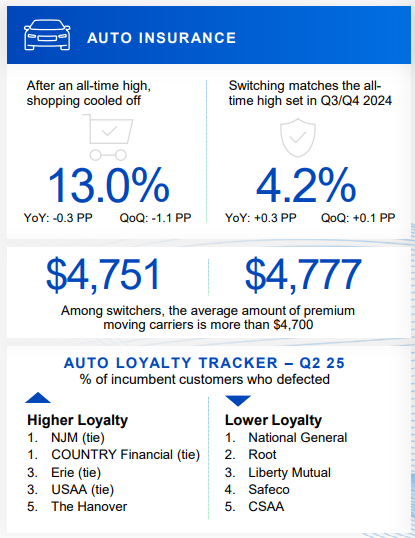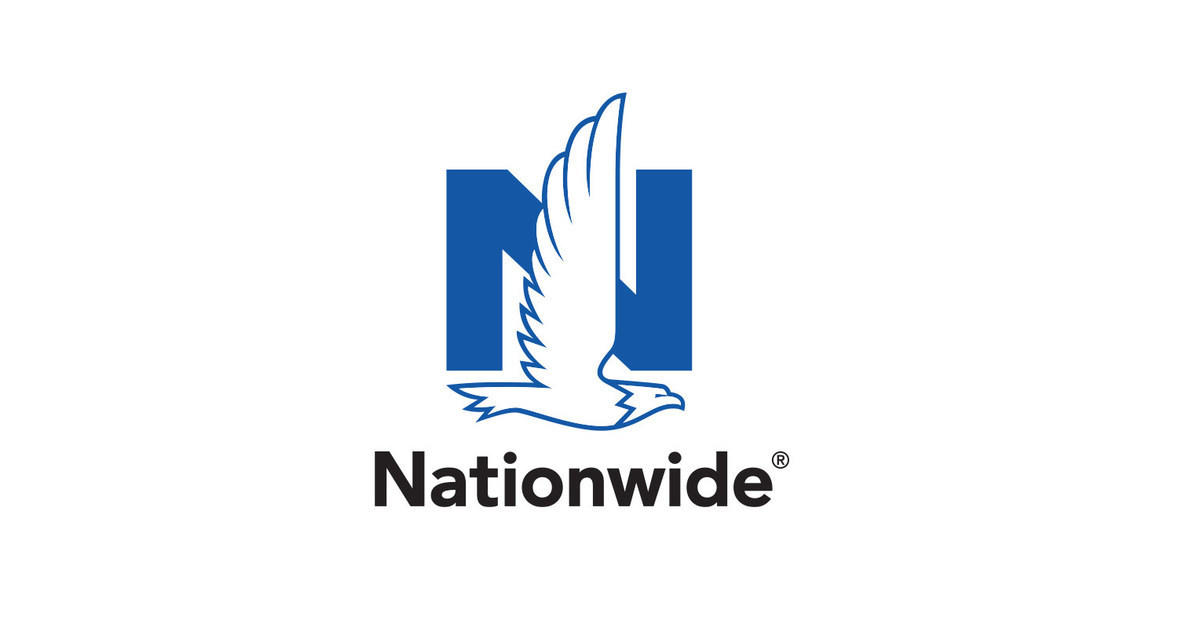AI in Insurance
The Artificial Intelligence Underwriting Company launches with $15M to help enterprises deploy AI with confidence
Superintelligence is within reach. In just five years, AI has advanced from preschool-level capabilities to systems that can reason and act with the skill of an undergraduate. Proof of concepts are emerging across industries—from finance and legal to healthcare, drug discovery, and frontier technologies—but enterprises hesitate to deploy AI agents that feel like black boxes.
They don't know which tools they can trust or who will be accountable if something goes wrong. There's a fear that hallucinated responses or unsafe outputs could lead to customer harm, revenue loss, regulatory risk, or reputational fallout.
Today, the Artificial Intelligence Underwriting Company (AIUC) launches to unlock the next wave of AI progress by building the confidence infrastructure for AI agents. The company also announces a $15 million seed round led by ((Nat Friedman at NFDG, with participation from Emergence, Terrain and others including Ben Mann, co-founder of Anthropic; and former chief information security officers at Google Cloud and MongoDB**.
Enterprises are walking a tightrope. On the one hand, they face an "adopt or die" moment as their industries are transforming overnight. On the other hand, when AI fails spectacularly, the consequences are steep and customer trust is breached. AIUC gives enterprises a way to adopt AI with confidence, before their competitors do it faster.
This playbook is time-tested throughout American history. In the 18th century, Benjamin Franklin responded to the fires ravaging Philadelphia not with bans, but with the country's first mutual fire insurance company. In the 19th century, when electricity posed new threats, insurance companies built UL Labs to test and certify the new technology. In the 20th century, as cars shaped modern life, insurers created safety standards and crash tests. Each time, insurance has made bold progress possible, before regulators could catch up.
Commentary/Opinion

What tech vendors get wrong pitching insurance companies
Former Aon EMEA Commercial Risk CEO: ‘Too many are selling a vision, not solving real problems for insurers.’
The insurance industry is being pitched innovation it can’t use.
In their rush to promote innovation, tech vendors targeting the insurance industry are missing in their approach to the sector—relying more on vision than problem-solving.
Recently, PropertyCasulty360 spoke to Tracie Thompson, the global lead of strategic clients at Cytora, about what insurance companies hear when tech vendors knock on their door. With over 25 years of experience, the former Aon EMEA Commercial Risk CEO now draws on her industry background to define Cytora's technology and support how (re)insurers operate.
PropertyCasualty360: What are tech firms getting wrong when trying to engage insurers at senior level? Thompson: Tech firms underestimate the nuances of the insurance industry - regulation, compliance and actuarial components pertinent to how the industry operates. Also, they don’t take the significant legacy of the systems which sit within insurance companies, some of which have been in place for more than 20 years and most senior execs have been in the industry longer so are far more reliant on these legacy systems than tech firms sometimes realize.
Tech firms need to focus more business issues with execs and be specific on what they’re solving for - accelerate underwriting, reduce expense ratios etc. Lastly, it’s important to understand the specific part of the insurance industry they’re engaging in as the value will need to be tailored - reinsurance, insurance, life, health—all have distinct and different operating models.
Can AI's Efficiencies Save Homeowners Insurance? | Insurance Thought Leadership
[Ed. Note: Includes online Interview with Matteo Carbone]
Any efficiency is always welcome, but the real opportunity lies in helping policyholders avoid losses.
An interesting conversation has been playing out online about whether the many efficiencies promised by generative AI can fix homeowners insurance, which has been barely profitable in the U.S. for more than a decade, even after investment income.
The short answer is no, not even if AI cuts personnel costs by 20%. Rate boosts will only provide limited benefit, too, given that homeowners already feel overcharged and that many regulators side with them, even as natural disasters increasingly imperil all of us.
But the long answer is interesting. It points to other areas, notably preventing damage from water and fire, where homeowners insurers could take huge chunks out of their expenses.
Let's have a look, based on one of our friend Matteo Carbone's famous deep dives into the numbers.
Paul Carroll, Editor-in-Chief, Insurance Thought Leadership

A Look at P&C in the Rearview Mirror | Insurance Thought Leadership
Reviewing our predictions for 2025 provides insights into industry progress on empathy, transparency, AI, claims and much more.
Alan Demers and Stephen Applebaum
News
Exclusive: China EV brands Zeekr, Neta inflated car sales using insurance scheme | Reuters
Chinese electric vehicle brands Neta and Zeekr inflated sales in recent years to hit aggressive targets, with Neta doing so for more than 60,000 cars, according to documents reviewed by Reuters and interviews with dealers and buyers.
The companies arranged for cars to be insured before they were sold to buyers, the documents show, enabling them under Chinese industry car registration practices to book sales early so they could hit the monthly and quarterly targets, the dealers and buyers said.
Stay up to date with the latest news, trends and innovations that are driving the global automotive industry with the Reuters Auto File newsletter. Sign up here.
Neta booked early sales of at least 64,719 cars through this method from January 2023 to March 2024, according to copies of records it sent to dealers, seen by Reuters. That was more than half the sales of 117,000 vehicles it reported over the 15 months. Neta's effort to book sales early has not been previously reported.
Zeekr, a premium EV brand owned by Geely, used the same method to book early sales in late 2024 in the southern city of Xiamen through its main dealer there, state-owned Xiamen C&D Automobile, according to dealers, buyers and sales receipts seen by Reuters.
Shares of Geely Auto, which is taking Zeekr private, fell as much as 4% in Hong Kong on Monday, on course for their biggest one-day drop since June 26.
Analysts and investors tracking China’s auto industry gauge performance and estimate inventory levels with two sets of sales data. Wholesale numbers reported by automakers to the industry association show sales from automakers to dealers, while retail data compiled from registration records of mandatory traffic insurance show the sales to users.
Research

J.D. Power: Auto insurance shopping decreases but consumers continue to switch | Repairer Driven News
Auto insurance shopping is starting to cool off after hitting an all-time high last quarter, according to a new report from J.D. Power.
Thirteen percent of consumers shopped for new insurance during the second quarter, a 1.1% decrease from last quarter and a 0.3% increase year over year.
While shopping was down, more consumers (4.2%) switched insurance. This is 0.1% higher than last quarter and 0.3% higher than this time last year.
According to the report, the average amount of premium moving carriers is more than $4,700.
Telematics, Driving & Insurance

Driving tech is helping parents raise safer teen drivers--here's how it works
For many parents, handing over the car keys to a teenager feels like handing over their heart, wrapped in steel and rolling at 60 miles per hour.
It's an understandable feeling that many nervous parents who ride as passengers with their kids have – as revealed in the latest Driving Behaviors Survey from Nationwide, finding that less than half of parents (42%) rate their teen's driving as "very good" or "excellent."
But here's the good news: while today's parents may be worried, they're getting proactive about helping their kids become better drivers and are better equipped to take action.
What Keeps Parents Up at Night?
Parents' top worries are as familiar as they are frightening: driving in poor weather (52%), distracted driving (42%), and speeding or reckless behavior (36%). And the risks are real. Nearly one in four parents say their teen uses social media or even get themselves ready (apply makeup, style hair) while driving. Some report their teens are texting (23%) or watching videos (18%) behind the wheel—behaviors that dramatically increase crash risk.
Safety Starts at Home
The survey also reveals that 95% of parents talk to their teens about safe driving at least once a month. When those conversations are paired with real-time insights and incentives, they become even more powerful.
And while only 26% of teens currently use dashcams, a whopping 96% of parents believe they're valuable for promoting accountability. As comfort with AI-enabled monitoring grows, families are embracing a future where technology supports—not replaces—good judgment.
Using Technology to Support Safer Teen Driving
Families can use telematics tools not just to monitor, but to actively support safer driving habits. Nationwide programs like SmartRide and the new Focused Driving Rewards are great tools to help parents encourage their teen driver with real-time feedback and incentives.
"Parents want to feel confident that their teens are making smart choices behind the wheel," says Casey Kempton, President of P&C Personal Lines at Nationwide. "These tools help make that possible—not just by monitoring behavior, but by encouraging better habits through positive reinforcement."

This Group Wants to Change California Telematics Laws | Bankrate
From Progressive’s Snapshot to Allstate’s Drivewise, safe driving telematics programs are everywhere, and they’re promising to save Americans hundreds of dollars a year.
Except in California. But the Coalition for Safe Driving Incentives (CSDI), a project of StopDistractions.org, aims to change that.
California has always been the odd state out when it comes to insurance, thanks to an unusually rigid regulatory environment in a state with high environmental risks and a high cost of living. In 1988, California’s Proposition 103 created strict regulations for insurers doing business in the state, severely limiting the data carriers may use to estimate driver risk and set the price of insurance. Since the 1980s, technology has evolved to give insurers elsewhere in the country new tools for estimating risk in real time — but California’s insurance code hasn’t caught up.
Jennifer Smith, CEO and co-founder of StopDistractions.org, says that without access to telematics, California drivers are cut off from savings and safety incentives that all 49 other states enjoy.
“The [telematics] approach is already working in every other state and in nearly every developed insurance system around the world,” Smith says. “California drivers are the only ones being left behind.”
Announcements
Duck Creek Finds Its Voice for the AI Era | Insurance Innovation Reporter
With the appointment of Tyler Jones as CMO, the prominent core systems provider plans to raise its profile in cloud and AI.
Duck Creek Technologies’ (Boston) place in the pantheon of core system/insurance platform vendor is secure, as a historical figure in the evolution of package software into the integrated suite model, and as a provider either keeping or setting the pace with the latest technological developments. The company has an enviable install base and a global tier-one presence. But despite its prominent industry role, Duck Creek has kept a relatively low profile in recent years, more focused on product development and client delivery than public positioning.
That’s beginning to shift.
With the appointment of Tyler Jones as Chief Marketing Officer, Duck Creek is set to bring greater visibility to its historic and current market role and, more specifically, to communicate an aggressive strategy with regard to cloud and artificial intelligence. Jones, who was most recently CMO of CLARA Analytics, brings an abundance of experience from both the carrier and vendor sides of the industry.
“There’s a perception that Duck Creek has been quiet,” Jones comments. “But the reality is that we’ve been heads-down, focused on building the strongest SaaS platform in the market. Now it’s time to get that message out.”
MOREps://iireporter.com/duck-creek-finds-its-voice-for-the-ai-era/
Claims
Matching Required for Insured's Covered Claim
An insurer paid its insured for a covered claim. Is the insurer required to provide matching coverage related to that claim?
An ambiguous coverage provision meant the insurer was required to provide matching coverage as an extension of a covered claim. The case is Summer Pines Villas Homeowners Ass'n v. Owners Ins. Co., 2025 U.S. Dist. LEXIS 17917 (W.D. Wis. 2025).
What Happened
A spring hailstorm inflicted physical damage to the roofs and siding of multiple buildings owned by the Summer Pines Villas Homeowners Association. Summer Pines submitted a claim for those damages to its insurer, Owners Insurance, who conducted an investigation through a third party. A few months later, Summer Pines received a claim payment from Owners Insurance for $855,120, which covered the roof of each building and the damaged portions of the siding on only some of the buildings.
However, Summer Pines claimed Owners Insurance had not accounted for the physical mismatch between the existing, undamaged siding and the recently replaced siding and requested more coverage. Owners Insurance denied that claim, arguing the policy only applied to the “direct physical loss” for the buildings–the roofs and the damaged siding. When Summer Pines submitted a demand for an appraisal of the loss, Owners Insurance refused. The insurer claimed Summer Pines was arguing over a certain type of coverage, not the amount of the loss.STORY CONTINUES
Today

NATIONAL TEQUILA DAY - Arriba, abajo, al centro, y pa' dentro
On July 24th, commemorate National Tequila Day with a little lime and salt. Mix up a Margarita, Paloma, or a Mamasita to celebrate the day! People have been making Tequila for centuries, and it was once known as mezcal wine.
Tequila History
It all started around the 16th century. Cortez arrived on the North American continent with his Spanish conquistadors. They didn't care much for the fermented mezcal wine served to them. However, the Spanish introduced copper stills to the population. Enter the distilling process.
Now, our story takes us to Tequila, Jalisco, Mexico. Located in a valley west of Guadalajara in Jalisco, Mexico, the town made a name for themselves by distilling Blue Agave. Even though a variety of succulents in Mexico produce mezcal, only one delivers the nectar to distill Tequila. Blue Agave grows in the highland region. Indeed, the unique growing conditions contribute to a larger size and sweeter tasting agave. In contrast, agave grown in the lowland regions taste and smell more herbal.
